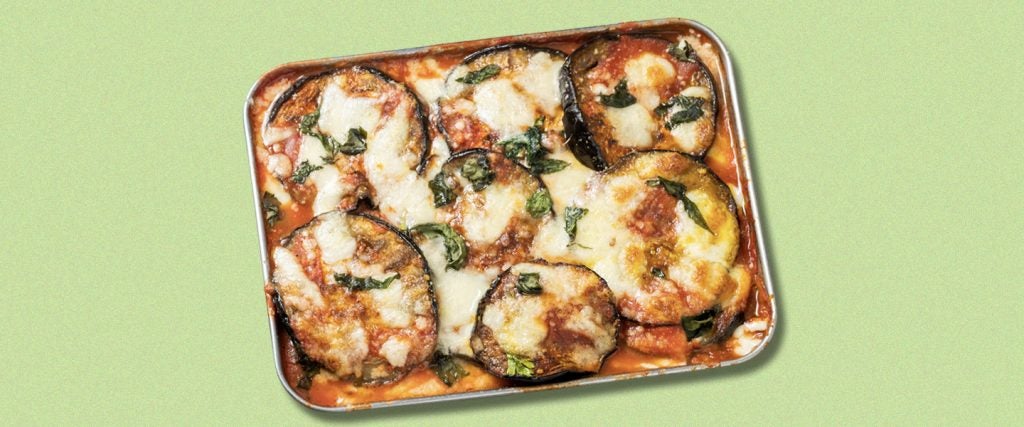Look, chicken parmesan is never gonna be a healthy way to prepare chicken. It’s covered in bread crumbs and flour. It’s fried in oil. And it’s excessively topped with melted cheese.
Riding to the rescue, theoretically, is eggplant parmesan, guided by the age-old premise that the ideal way to take a suboptimally healthy dish and give it a hit of nutrition is by extracting the core protein and replacing it with a vegetable.
But does this work in the case of the chicken-to-eggplant parmesan transition? While we’re at it, does this ever work?
Of course it works! Vegetables are healthy!
Well, that chicken is healthy, too. It’s not like we’re having a discussion about pulling a one-for-one swap with a Baked Alaska. We’re discussing replacing one of the most low-calorie, high-protein and eminently palatable sources of animal nutrition in existence with a bulbous vegetable that’s technically a fruit despite no one ever wanting to acknowledge it.
Setting aside the technicalities of taxonomic classification, we can find ranges for the caloric content of a sliced piece of raw eggplant in the realm of 20 to 35 calories, which is likely a consequence of personal size preferences being inserted into each eggplant parm recipe. Several call for the eggplant to have salt sprinkled on top of it to draw out some of the bitter liquid contained within it. From there, each slice is put through an assembly line where it’s dipped in flour and bread crumbs, and then has egg smeared upon its crusted surface before it’s fried. Afterwards, it’s often double, triple or quadruple layered with mozzarella, before marinara and Parmesan are splashed atop it.
Ultimately, you have a comparison between chicken parmesan and eggplant parmesan that averages out this way amongst all recipes:

As you can see, the chicken parmesan has far more protein, less carbs and far less sodium. It also carries substantially more cholesterol, but not an amount that’s ridiculous provided that you’re not overdoing things in other areas of your diet. And as you can see, the fat content is roughly equivalent while the caloric content is within hailing distance of the eggplant variation. Speaking of which, the eggplant variation reaches a sodium level that might cause some health professionals to sound the alarm. In fairness, though, it also possesses 10 times the fiber of its poultry counterpart.
Basically, it’s tough to make an objective claim that a slam-dunk victory is achieved by either version.
I’m kinda flabbergasted. I expected the eggplant version to fare better.
I don’t blame you, but this is often the case when foods advertised as healthy are recruited to substitute for other foods that are unhealthy — they’re often forced to become the least healthy versions of themselves in order to adequately substitute for the item being replaced.
You see this pattern play out whenever chicken sausages replace pork sausages or turkey bacon replaces regular bacon. It’s often the unhealthy essence of the item that makes it so delicious, and we force the healthy replacement to be anything but. In this particular case, we take an unsuspecting piece of eggplant, douse it with salt, flour and bread, fry it in oil and load it up with cheese. You can’t add so many high-fat, high-calorie ingredients to a low-calorie food item and be shocked when it doesn’t result in a large caloric deficit.
So, if you want to make a chicken parmesan healthy, you don’t eliminate the chicken breast — that was the one undeniably healthy thing about it. You start with everything else instead.

